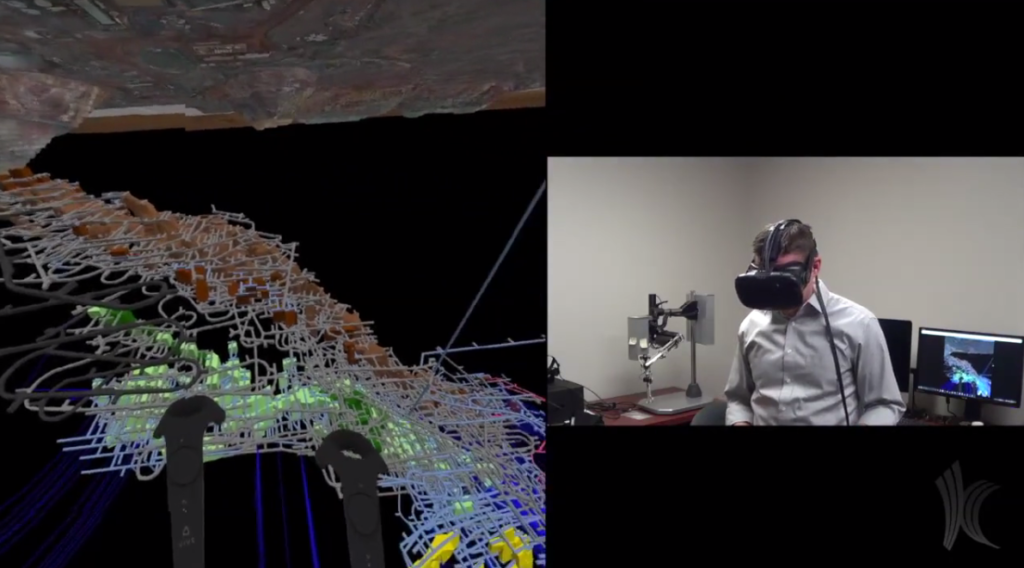Newmont’s Richard Inglis highlights the value of virtual reality. “Some like to think that virtual reality in mining is just a trend,” he says. “It’s not. Every day, it’s helping us make smarter decisions faster.” As Newmont’s Principal Development Geologist, Inglis provides consulting for geological modeling and oversees implementation of mine geology tools and techniques like virtual reality. “I test hardware and facilitate software development that enables virtual reality applications across Newmont,” he explains.
His work is helping Newmont visualise results of exploration and development drilling, geological models, grade models and topography. The human brain has a hard time translating real-world 3-D on a 2-D computer screen. “But with virtual reality,” Inglis says, “we’re able to see drill holes and geology models in a different way, at real scale.” With a new “heightened level of reality,” Newmont’s people can identify potential errors virtually and make better decisions in actual practice. “Virtual reality is proving to be a powerful communication tool to showcase our operations and projects to investors, analysts, reporters and Board members,” adds Marcelo Godoy, VP, Resource Evaluation and Mine Planning.
ParaView software – an open-source, multi-platform data analysis and visualisation application – is enabling such decision-making. “We chose the platform for its high-performance computation,” Inglis explains. “It’s also open-sourced, so any enhancements we make are readily available to all.”
Technological innovations don’t just stop at mine planning, as virtual reality-equipped headsets have become a valuable tool for stakeholder engagement as well. Inglis and his team can now take investors underground (while standing in the middle of a trade show) and help community members envision a future reclamation project (from the comfort of an office chair).
Inglis sees the relationship between mining and virtual reality growing even stronger. As prices for hardware come down, more and more vendors will recognise its potential to model and design the mines of the future. “Virtual reality in our industry will only be limited by our imagination.”
Last year, through a combined effort, Kitware and Newmont visualised ongoing expansion of the Tanami mine in virtual reality. For the work, Kitware added functionality to ParaView, which it offers as an open-source software solution for high-performance computing (HPC). “We teamed up with Newmont geologists to not only model the existing underground development of the Tanami mine but to map planned activities in accordance with results from exploration drilling,” said Ken Martin, who led the visualisation effort at Kitware. “The virtual environment in ParaView has helped geologists to investigate whether their expansion plans will allow miners to reach gold in the most effective and efficient manner.”
“The work we do in mining makes intense use of three-dimensional visualisation of spatial data, so we have been monitoring advances in VR technology for a few years,” Godoy said. “The traditional mining software providers were too slow to include VR into their development roadmaps; therefore, we decided to partner with Kitware to bring the technology to a level where it can be effectively used for resource modeling and mine planning.”
To assist Newmont geologists, a team from Kitware added functionality that grants users control over the exact scale of the virtual world in ParaView. This functionality has encouraged Newmont geologists to easily transition from viewing the entire model of the mine to individually touring life-size tunnels and branches.
“VR provides a unique way for us to interact with our drilling data, geological models and mine plans,” Godoy said. “The ability to visualise huge amounts of data at real-world scale enhances our abilities to recognise mineralisation patterns and make better design decisions.”
The Kitware team worked with Newmont to create a customised version of ParaView that enables users to virtually travel at scale-appropriate speeds.











